About Us
Information about St. Augustine's House origins and daily life
A Lutheran Monastery!?
Most people have never heard of a Lutheran Monastery. Many think that there cannot be any such thing. I beg to differ. I am a supporter of just such a monastery and have written a book about its history and its reason for being. This pamphlet is an abbreviated, updated version of that book, called “My Brothers’ Place,” published in 1992. Both book and pamphlet are written from the point of view of a friend, neither a monk nor a stranger. My comments about this effort at monasticism are based on more than fifty years of affiliation with the community.
– George Weckman
Monasteries always have been surrounded by circles of friends. With varying degrees of commitment, participation, and support, these people extend the influence of the monastic community. The relationship between friends and monasteries is very important both to the monastic communities and to the individual friends. Monasteries cannot exist without such friends; you are invited to become one.
Arthur Carl Kreinheder
“The Congregation of the Servants of Christ” is the formal name of the monastic community at St. Augustine’s House in Oxford, Michigan. It was founded by a man everyone called “Father Arthur,” Arthur Carl Kreinheder. He was born in St. Paul, Minnesota, on October 1, 1905. His father, Oscar Carl Kreinheder (1877-1946), was a pastor of the Missouri Synod Lutheran Church and was best known as the president of Valparaiso University in Indiana from 1930 to 1939. Arthur’s mother, Hannah Coyner (1877-1971), was from the Shenandoah Valley of Virginia.
Arthur grew up in St. Paul and Detroit where his father served parishes. After graduation from the University of Michigan he went to work for Hudson’s, a Detroit department store, in 1930. He joined the navy in 1942 and captained a ship patrolling the U.S. Atlantic coast. At war’s end he returned to Hudson’s and became buyer of furs. In 1950 he gave up the life of a successful businessman to study theology in Lund, Sweden. As early as 1948 he had been in touch with the Protestant monastic community that was forming in Taize, France. During his time of study in Sweden he visited with the founding brothers, Roger Schutz and Max Thurian. Briefly, in 1955, he became a novice in the Community of Taize. He also hosted Brother Roger and Brother Max on a tour of the U.S. that year.
On May 27, 1956, in his fifties, he was ordained a priest in the cathedral of St. Lawrence in Lund, Sweden. The ordaining bishops were the famous theologian-bishops Anders Nygren and Gustaf Aulen. Rather than being assigned to a specific parish or other church post, he was commissioned “for ecumenical work in the United States among Lutherans.”
Arriving back in Detroit in June 1956 he was just in time to attend the Liturgical Institute sponsored by Valparaiso University. During that meeting people interested in monasticism as well as liturgical reform founded the Fellowship of St. Augustine, a prayer and support group to encourage the establishment of a Lutheran monastic community in the U.S. The name derives from the approval given St. Augustine’s monastic community in the 16th century Lutheran confessional writings. Father Arthur’s home near Oxford, Michigan, henceforth to be called “St. Augustine’s House,” was designated the retreat center of the Fellowship.
The Congregation of the Servants of Christ began at St. Augustine’s House in 1958 when some other men joined Father Arthur in observing the monastic life and offices of prayer. These men and others came and went over the years. Many men have tested their vocations to monastic life by living at the house for some time, from a few months to many years, and Fr. Arthur was the gracious host to thousands of visitors. By 1974 his formerly robust health began to fail. At this time there were a few men living at the house hoping to continue as members of the community. Father Arthur decided to escape the cold Michigan winters by spending some months in Florida each year. He returned to Michigan for the months of mild weather, but better health was sporadic; he battled cancer in 1977 and had a heart attack in 1987. At the age of 84 Arthur Carl Kreinheder died on Friday, October 13, 1989, in a Pontiac, Michigan, hospital. He had never recovered fully from a stroke suffered in the preceding July. He is buried in the cemetery at St. Augustine’s House.
Foundation
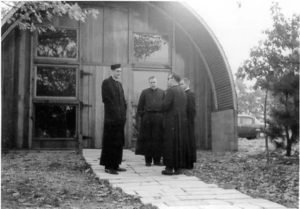 A Quonset hut erected in 1958 served as a chapel until 2001. It was named for the Feast of the Visitation of the Blessed Virgin Mary, appropriate to a place of worship with many visitors. It was a humble building with a small pipe organ and simple appointments. After all those years of service it was replaced by a more adequate and dignified structure. This beautiful building is the heart of the community as it houses the Eucharist and seven offices of prayer daily.
A Quonset hut erected in 1958 served as a chapel until 2001. It was named for the Feast of the Visitation of the Blessed Virgin Mary, appropriate to a place of worship with many visitors. It was a humble building with a small pipe organ and simple appointments. After all those years of service it was replaced by a more adequate and dignified structure. This beautiful building is the heart of the community as it houses the Eucharist and seven offices of prayer daily.
Behind the chapel is the cemetery where many friends of the monastery are buried. Monks are more conscious of human mortality than others, so it is appropriate that the cemetery is part of this place.
In July 1963 the old St. Augustine’s House, formerly Father Arthur’s vacation home, burned to the ground. By 1965 a new building was built, dedicated on Holy Cross Day 1966 by Bishop Olof Herrlin of Sweden. A plain but dignified brick structure, it has small rooms for overnight guests and resident associates. This is referred to as the retreat house and its large rooms are used for meals and meetings.
A simple building of wood was constructed in 1981, called the hermitage, to serve as a quiet place for Father Arthur to live during the summer. It was expanded a few years later and now serves as the residence for members of the monastic community. Near the hermitage a new residence building was built in 2008. It has four rooms with bath for the use of members and associates of the community.
Present Situation
Father John Cochran is now prior of the monastic community. There are three more in residence, two as novices, one an associate. Those interested in beginning the process of determining whether they should join the community are welcome. Surrounding the resident community are the concentric circles of friends and guests. St. Augustine’s House has hosted thousands of people in conferences, retreats, and daily services over the years. Many of these become members of “The Fellowship of St. Augustine” and receive the newsletters of the community. Each summer near the 28th of August a day with prayers and a lecture is held for the members.
The community also has a smaller group of friends who take on special responsibility for the community as “associates.” Because monastic community is still being established at St. Augustine’s House, the associates play a big role in its life.Eventually a larger number of resident monks might be less obviously dependent on the associates, but the situation today provides a special opportunity for friends to have a significant role in the life of a monastic community.
Monasteries do not house only monks but also function as residences for periods from a few months to a few years for people who appreciate a time of monastic exercise in their lives. So St. Augustine’s House has been a temporary home for many people, somewhat in the pattern of the Hindu ashram. Many options in degree and length of affiliation to the community are helpful, given the changeful nature of life in the modern world.
The closest friends of the community and the house are the group of people living in the neighborhood who worship weekly at the chapel. For them the monastery becomes a special kind of parish. They do not live in the buildings or come to all the prayers of each day but visit frequently. Those of us who live too far away to be with the community so often try to get there at least once a year for some days of retreat. During such times, we can participate in the regular life of the community and draw great benefit from even a few days’ experience of it.
Ecumenical Friendships
Father Arthur’s dedication to Lutheran unity and Christian ecumenism is an important factor that continues to draw people to Oxford and introduces them to a new kind of religious affiliation, often crossing denominational lines. The circle of friends of the community has included people from many different Protestant denominations, Roman Catholics, and Eastern Orthodox.
Monks of the Episcopalian monastery of St. Gregory in Three Rivers, Michigan have been friends from the beginning. Contacts with Roman Catholicism were strengthened when the Sylvestrian Benedictine order established a monastery within walking distance of St. Augustine’s House, around 1960. The inspiration and practice of Benedictine monasticism is itself obviously an ecumenical affirmation. Communities following the Rule of St. Benedict share a devotion and lifestyle regardless of ecclesiastical affiliation.
An international element was added in 1965 when word reached Father Arthur about a group of men in Sweden who were establishing a Lutheran Benedictine community. This community had been founded by a group of students in 1960 and had established its first monastery in 1965. Father Arthur soon became an overseas member of that community. It was agreed from the beginning that he would continue to live in the U.S. and that St. Augustine’s House would be a sister community of the Swedish order. Some of the novices of the Congregation of the Servants of Christ have lived with the Swedish monks for periods of time, and the Swedish brothers have made numerous visits to Michigan. This Monastery thrives in Östanbäck, Sweden.
When East Germany became more open to contacts from the rest of the world, a Lutheran monastic community there was revealed. Since 1990 friendly relationships have developed with St. Wigberti monastery in Werningshausen, near Erfurt.
Monastic Life
Following the Benedictine Rule, seven separate liturgical offices plus the Eucharist are observed each day. The time spent in these activities in the chapel totals about three hours, not including the times set aside for personal reading and meditation each morning. The following schedule is typical of the daily usage for many years, although it is adjusted for special circumstances. The Office of Vigils begins at 5:10 a.m. and is followed by a time of personal meditation until Lauds at 6:00. Silence is observed after Lauds when one may get some breakfast and/or read. Terce at 8:15 is followed by the Eucharist at 8:30. The “great silence” ends as the work of the day and other matters of concern are discussed during the “Chapter,” held in the retreat house lower level. “Chapter” is so named for the ancient monastic practice of reading a chapter of St. Benedict’s Rule each day. Sext, None, and Vespers are at noon, 2:30, and 6:00 respectively, with Compline at 8:30. Each office consists of psalms (read or chanted), scripture lessons and at least one hymn or canticle.
The liturgical practice of the monastery has an immediate familiarity to those who worship within the American Lutheran churches and is recognizable to anyone in the Western Church’s liturgical tradition. The Lutheran Book of Worship is the basic hymnal in the chapel. Monastic prayers are different from many other kinds of worship, however. They have special characteristics that yield special benefits. Many psalms are recited or chanted at each office. Plainsong or Gregorian tones and hymns are sung. The slower, deliberate pace and the sheer length of the time devoted to prayer have an effect of their own. This kind of calm, regular practice helps develop a disposition toward reflection and meditation.
The observance of the offices and the Eucharist are the heart of St. Augustine’s House. They are the primary activities for which people come and the center of the community life. All other activities are subordinated to prayer and to giving one’s attention to God. Mundane matters such as sleeping, eating, and conversation are conducted in a different way in a monastery. All the changes from normal behavior are beneficial in signaling and accompanying the deeper reformation of life for which the monastery is a school. Just because it is different, not spontaneous but self-conscious, the monastic way of doing ordinary things helps one to reflect on their role and place in one’s life.
Silence is one of the practices which seems strange to some people. The great period of silence starts with the end of Compline and lasts until the end of Terce or the Eucharist. Another period of silence is observed after the noon meal until None. Sleep, reading, and meditation are private activities which certainly should be preserved from all but the most necessary interruptions. During the rest of the monastic day, however, silence should be preferred to talk, thus encouraging one to reflect on the need to speak. There are plenty of times for conversation, usually after the Eucharist, siesta, and supper. Of course people do talk at any time when it is clearly needed. There is no sense in being rigid about this or any other regulation.
Silence is a mechanism for turning the attention toward God and self. Social interaction is wonderful but demanding. One becomes even more aware of the claims people can make on time and attention when they are limited and distanced temporally. Silence stops the flow of self outward and makes people more aware of their selves.
After the essentials of food, sleep, and worship are taken care of, the monk or guest still has time left for work and leisure. The work periods for any resident may involve a task in service of the community (house maintenance, tending the garden, preparing a meal, putting labels on mail, shelving books in the library, mowing the lawn, cutting and hauling wood, snow removal, shopping and other errands). The work periods can include study and further reflection beyond the appointed time for meditation, but it is desirable that they involve some physical labor. There is religious value as well as health benefit in the activity of the body. This work should be fitted into the pattern of ritual activity and subordinated to it. One must avoid work which robs time from the offices of prayer or times for reading and meditation. It is so easy for us to be consumed by work when there is a sense of accomplishment and pride in it. The monastic custom helps us to put work in its place, again in a middle position, between the ease of the playboy and the disease of the workaholic.
It has been beneficial, if not exactly planned, therefore, that the community has never taken on a specific service or work. One does not come to the house in order to do anything other than the fundamental monastic activity of prayer. Even pressures to use the facilities as a conference center must be resisted. The community must be on its guard against attempts to adopt a program or activity that could vitiate its essential purpose. Individuals and groups are, nevertheless, constantly welcomed and incorporated into the daily life. As their various projects are pursued at the House, its framework of prayer and meditation surrounds and blesses such endeavors.
Community
At the center of any monastery are the monks, that is, people who have been received as professed members of the community. Profession consists of solemn commitments to make the monastery one’s home for life, to participate in all the offices of prayer, and to dedicate one’s time and energy to the work of the community. Of course this regular pattern of life is sometimes interrupted by travel, illness, and other obligations, but no community is a monastery without this core people. There are two professed monks at St. Augustine’s House in 2011.
Monasteries also have other residents who do not have the monk’s level of commitment but participate in much of the worship and work of the place. These long-term residents are usually “associates” of the community. Associates are supporters and frequent visitors, if not residents. They try to live lives which reflect monastic values and practices at the monastery and in their homes elsewhere. In traditional monastic terminology these are called oblates or third order members. There are 35 associates as this is written.
Surrounding the resident community are the concentric circles of friends and guests. St. Augustine’s House has hosted thousands of people in conferences, retreats, and daily services over the years. Many of these become members of The Fellowship of St. Augustine and receive the newsletters of the community. Each summer near the 28th of August, St. Augustine’s Day in church calendars, members gather for worship and discussion with a lecture by a prominent speaker.
Monasteries welcome guests for periods from a few days to a few years. These are people who appreciate a time of monastic exercise in their lives. St. Augustine’s House has been a temporary home for many people, somewhat in the pattern of the Hindu ashram. Many options in degree and length of affiliation to the community are helpful. These periods of retreat are needed in the face of all the changes of life today. These changes demand and afford a some time to reflect and consolidate one’s goals, associations, and spiritual life. People can use a retreat when completing seminary or other schooling, retiring from work, grieving the loss of a spouse or close friend, or any of a number of life adjustments. Living at a monastery for weeks or months can provide a breathing space and recuperation to prepare for the next things God gives.
Another group of friends of the community and the House are the people of the neighborhood who worship on Sundays at the chapel. For them the monastery becomes a special kind of parish. They do not live in the buildings or attend prayers each day but visit frequently.
An Invitation
As you can read between the lines of this short description, my affection for this place and my debt to it are great. I wish everyone could have such a place to which to retreat periodically. Like all good friendship, the rewards are greater than the cost. Maybe the possibility of having such a community and its large circle of friends can be an inspiration to you to join this monastery in some way and share in its life and mission.
– A Brief History of Saint Augustine’s House, George Weckman
Links
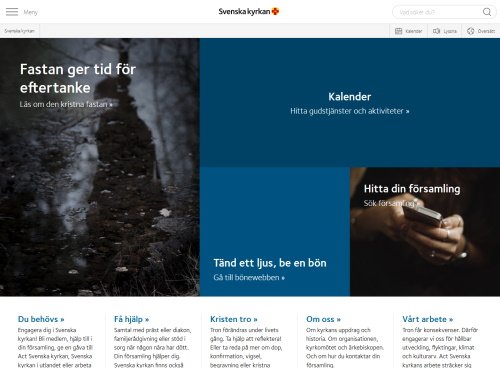
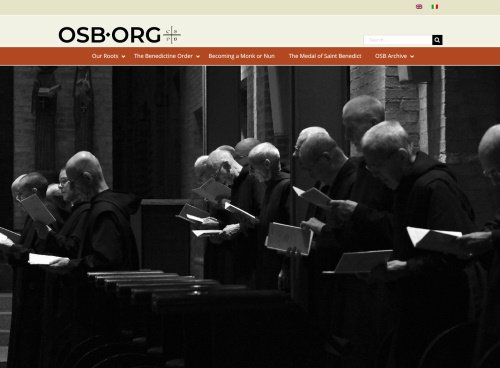
Order of Saint Benedict
The home page for the Benedictine order around the world. General information on monasticism and links to many other monasteries.
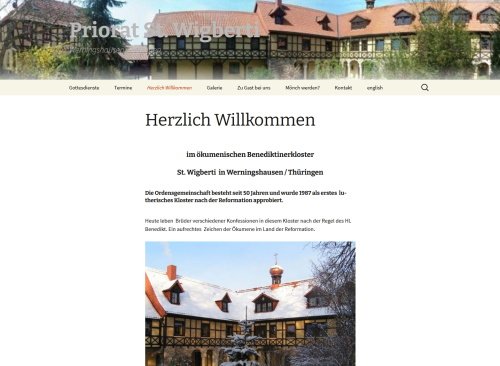
Priory St. Wigberti in Werningshausen Thuringia / Germany
Das Priorat Sankt Wigberti ist ein ökumenisches Benediktinerkloster unter dem Dach der Evangelisch-lutherischen Kirche in Thüringen.

Dominican Sisters of Mount Thabor
The sisters are our dear friends who live not far from us. They support and encourage us by their prayers and holy example.
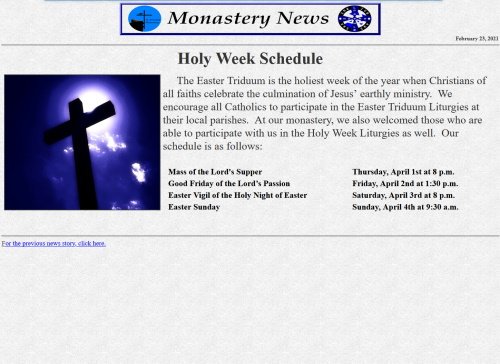
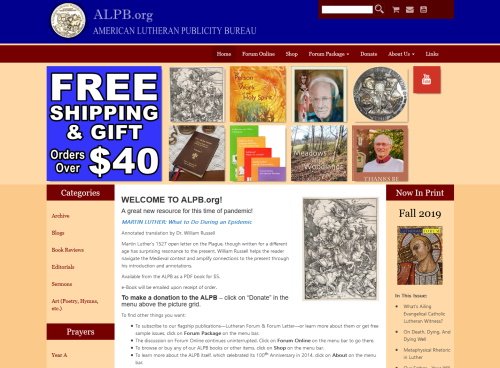
American Lutheran Publicity Bureau
Lutheran Journal Books, Pro Ecclesia, Forum Letter, Tracts